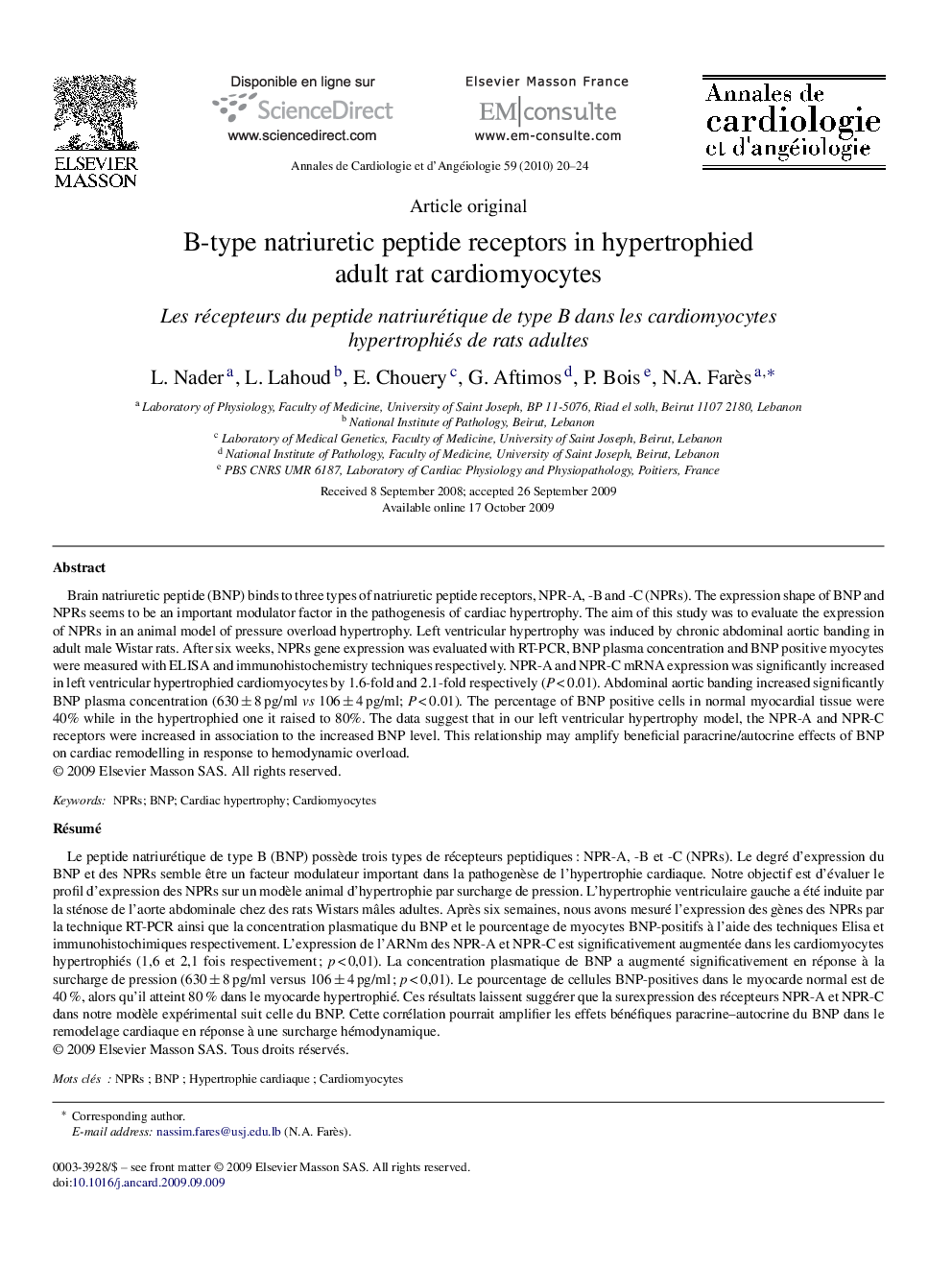| Article ID | Journal | Published Year | Pages | File Type |
|---|---|---|---|---|
| 2869237 | Annales de Cardiologie et d'Angéiologie | 2010 | 5 Pages |
Brain natriuretic peptide (BNP) binds to three types of natriuretic peptide receptors, NPR-A, -B and -C (NPRs). The expression shape of BNP and NPRs seems to be an important modulator factor in the pathogenesis of cardiac hypertrophy. The aim of this study was to evaluate the expression of NPRs in an animal model of pressure overload hypertrophy. Left ventricular hypertrophy was induced by chronic abdominal aortic banding in adult male Wistar rats. After six weeks, NPRs gene expression was evaluated with RT-PCR, BNP plasma concentration and BNP positive myocytes were measured with ELISA and immunohistochemistry techniques respectively. NPR-A and NPR-C mRNA expression was significantly increased in left ventricular hypertrophied cardiomyocytes by 1.6-fold and 2.1-fold respectively (P < 0.01). Abdominal aortic banding increased significantly BNP plasma concentration (630 ± 8 pg/ml vs 106 ± 4 pg/ml; P < 0.01). The percentage of BNP positive cells in normal myocardial tissue were 40% while in the hypertrophied one it raised to 80%. The data suggest that in our left ventricular hypertrophy model, the NPR-A and NPR-C receptors were increased in association to the increased BNP level. This relationship may amplify beneficial paracrine/autocrine effects of BNP on cardiac remodelling in response to hemodynamic overload.
RésuméLe peptide natriurétique de type B (BNP) possède trois types de récepteurs peptidiques : NPR-A, -B et -C (NPRs). Le degré d’expression du BNP et des NPRs semble être un facteur modulateur important dans la pathogenèse de l’hypertrophie cardiaque. Notre objectif est d’évaluer le profil d’expression des NPRs sur un modèle animal d’hypertrophie par surcharge de pression. L’hypertrophie ventriculaire gauche a été induite par la sténose de l’aorte abdominale chez des rats Wistars mâles adultes. Après six semaines, nous avons mesuré l’expression des gènes des NPRs par la technique RT-PCR ainsi que la concentration plasmatique du BNP et le pourcentage de myocytes BNP-positifs à l’aide des techniques Elisa et immunohistochimiques respectivement. L’expression de l’ARNm des NPR-A et NPR-C est significativement augmentée dans les cardiomyocytes hypertrophiés (1,6 et 2,1 fois respectivement ; p < 0,01). La concentration plasmatique de BNP a augmenté significativement en réponse à la surcharge de pression (630 ± 8 pg/ml versus 106 ± 4 pg/ml ; p < 0,01). Le pourcentage de cellules BNP-positives dans le myocarde normal est de 40 %, alors qu’il atteint 80 % dans le myocarde hypertrophié. Ces résultats laissent suggérer que la surexpression des récepteurs NPR-A et NPR-C dans notre modèle expérimental suit celle du BNP. Cette corrélation pourrait amplifier les effets bénéfiques paracrine–autocrine du BNP dans le remodelage cardiaque en réponse à une surcharge hémodynamique.
